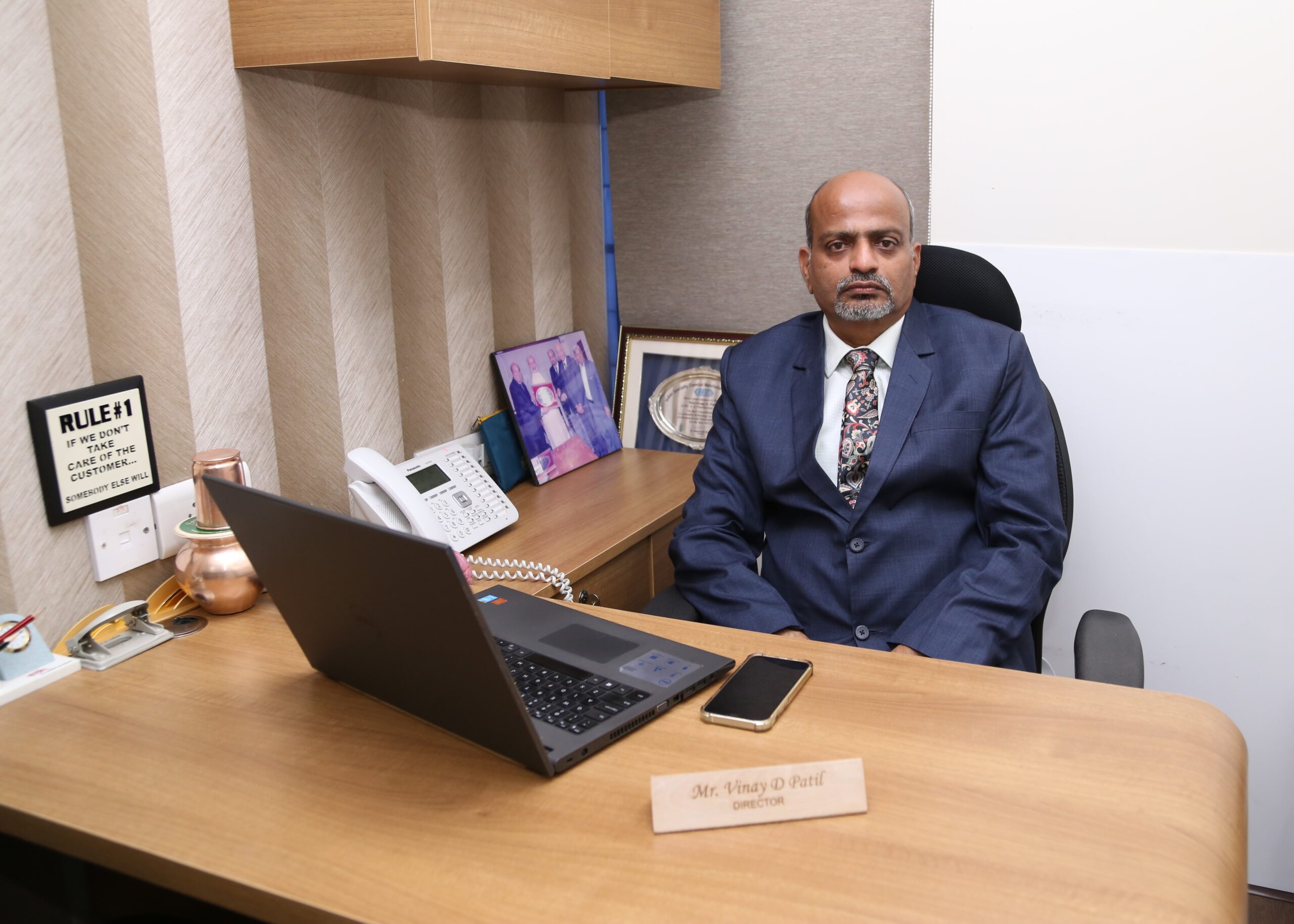Lending in the Language of Trust: Credifin’s Journey Beyond AUM

India’s lending ecosystem is quietly transforming, shaped not only by fintech disruptors but also by nimble, mid-sized NBFCs driving meaningful change on the ground. Credifin Limited stands out among them, steadily evolving from a traditional vehicle financier into a tech-enabled credit platform with a growing footprint across rural and semi-urban markets.
At the helm is Shalya Gupta, CEO of Credifin, whose leadership reflects a blend of operational discipline, inclusive vision, and digital adaptability. In this exclusive interaction with SMECommunities, Mr. Gupta shares insights into the company’s journey, priorities and how Credifin is positioning itself for sustainable growth in India’s fast-changing credit landscape.
1. Credifin has undergone a substantial transformation since 2020, evolving from a legacy vehicle financing model to a diversified, technology-enabled credit portfolio. What were the key challenges you encountered during this transition and how did you ensure regulatory compliance and business continuity throughout the process?
One of the most defining aspects of Credifin’s transformation since 2020 has been navigating a fundamental shift in mindset both internally and externally. As we evolved from a legacy vehicle finance model to a tech-enabled, diversified credit platform, our greatest challenge wasn’t just technological it was cultural. Internally, we had to rewire how we thought, worked, and scaled. That meant building a culture rooted in agility, data-led decision making, and ownership. Structured onboarding, deep capability building, and nurturing innovation became central to how we grew our teams.
Externally, we redefined our approach to credit. Moving away from legacy OEM buyback guarantees, we introduced on-ground, trust-based assessments backed by data. This disciplined shift brought immediate value: stronger portfolio quality and deeper, more transparent relationships with borrowers and partners. Our underwriting model became sharper, more inclusive, and better aligned with the realities of our customers’ lives.
Throughout this evolution, compliance remained non-negotiable. We embedded traceability and audit-readiness into the very architecture of our systems. This ensured we remained not just compliant, but future-proof. Ultimately, what powers Credifin today is our ‘phygital’ approach where intelligent tech and empowered teams work in tandem to deliver inclusive, responsible credit at scale.
2. With a strong operational presence across rural and semi-urban geographies, how does Credifin approach credit underwriting in markets where access to formal financial data remains limited? To what extent has technology played a role in bridging this gap?
At Credifin, we follow a simple but powerful philosophy: ‘Tech and AI where it matters, discipline where it counts.’
We’re big believers in using technology to drive impact, whether it’s in smarter lead generation, faster processing, or predictive collection models. But when it comes to credit decisions, especially in rural and semi-urban markets where data can be limited, we combine tech with strong credit fundamentals.
For customers with informal income, our credit managers play a key role. They’re trained to assess income patterns and understand the local context. At the same time, we use tools like the Account Aggregator framework to get a clearer picture of banking behaviour like past loans, defaults, EMI bounces etc., anything that helps us understand repayment capacity better.
So yes, technology has helped us bridge the information gap in a big way. But we never rely on it alone. It’s the combination of digital intelligence and human judgment that helps us make smarter, more responsible lending decisions.
3. Segments such as EV financing and MSME lending particularly with a focus on women entrepreneurs have witnessed notable momentum. How does Credifin manage the balance between expanding financial inclusion and maintaining prudent risk controls in these emerging lending verticals?
At Credifin, we see them as high-impact growth areas. But we approach them with a clear lens of responsible innovation. Our aim is to expand financial inclusion without compromising on asset quality.
We’ve built a robust credit framework around the CARE Matrix (Cash Flow, Social Assessment, Risk, and End Use). This helps us evaluate every borrower holistically, especially in segments where traditional credit scores may not tell the full story.
We also apply smart portfolio controls. For instance, in the EV space, we cap disbursements by geography, limiting the number of vehicles financed per location per month. This allows us to manage concentration risk proactively and maintain balance across the portfolio.
Our approach is simple: fuel underserved growth but do it sustainably. We’re not chasing high AUM for the sake of scale. We’re focused on building a resilient, long-term portfolio that aligns with our vision of inclusive, sustainable lending.
4. India’s digital public infrastructure, including platforms such as ONDC, Account Aggregators (AA) and OCEN, holds significant promise for broadening financial access. What is your perspective on how such initiatives could enable more efficient credit delivery to underserved borrower segments?
India’s Digital Public Infrastructure (DPI) is a game-changer for financial services, especially in how it expands access to underserved segments while improving the quality of credit decisions. In digitally mature regions like parts of Western India, platforms such as account aggregators and digital identity tools are enhancing transparency, enabling lenders to better assess risk and offer borrowers more competitive interest rates.
In emerging markets, particularly in Eastern India, DPI helps onboard new-to-credit customers by creating a visible digital footprint. This bridges the gap between informal and formal credit systems. As adoption grows, we believe DPI will foster both inclusion and efficiency allowing responsible lenders like us to lend with greater confidence.
5. With an AUM exceeding ₹350 crore and operations spread across 13 states, what strategic priorities will drive Credifin’s next phase of growth? Are there specific plans to expand into new regions, introduce innovative credit products or forge partnerships with fintech’s and co-lending partners?
Credifin is entering an exciting phase of purposeful growth. Over the next two years, our strategy rests on four core pillars: geographic expansion, product innovation, technology-led partnerships and deepening customer lifetime value.
We aim to strengthen our presence in existing markets while carefully expanding into new geographies prioritizing disciplined growth over aggressive scale. On the product front, we’re designing credit solutions tailored to specific borrower segments. For example, our EV Startup Loan evaluates a borrower’s projected cash flows, offering a more forward-looking view of creditworthiness particularly useful for underserved, first-generation entrepreneurs.
While secured lending remains our focus, we’re moving beyond a one-size-fits-all approach. Understanding the customer’s real financial need and crafting solutions around it is key to building a more inclusive and responsible credit ecosystem.
Partnerships are also a vital lever. We’re actively working with fintech’s to enhance credit models, customer experience and operational efficiency. Our in-house tech team is building platforms that enable better service and engagement throughout the borrower lifecycle.
Co-lending, too, is gaining traction. With several alliances in place and more in the pipeline, we’re fully aligned with the regulator’s vision and see it as a critical enabler of inclusive finance. Ultimately, we want to build long-term, value-driven relationships not just finance loans but uplift lives.
6. Your fintech venture, Empower Loans, introduced a novel approach to addressing top-up loans and repayment challenges. Do you foresee Credifin incorporating similar digital-first innovations to enhance customer engagement, streamline collections and improve operational efficiency?
The vision behind Empower Loans continues to shape how we think at Credifin. Many of the digital-first strategies pioneered at Empower have been thoughtfully adapted to suit our current scale and customer base. Our focus remains on using technology to simplify credit access, improve customer experience and enhance operational efficiency. A key outcome is our industry-leading digital collections performance nearly 80% of repayments now happen through digital channels, which is a significant shift in a segment still dominated by traditional methods.
But we haven’t just replicated Empower’s model, we’ve evolved it. Our strong on-ground presence and deep customer engagement at Credifin allow us to build richer insights into borrower behaviour. We’ve developed a more robust tech platform that not only manages repayments and top-ups efficiently but also helps our teams understand real-time customer needs and friction points. This hybrid of digital innovation and human connection is central to how we’re building trust and long-term impact across underserved markets.










